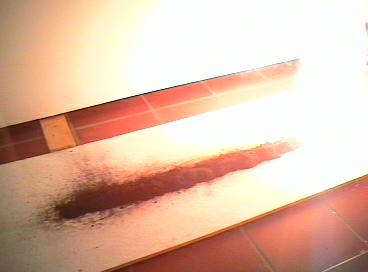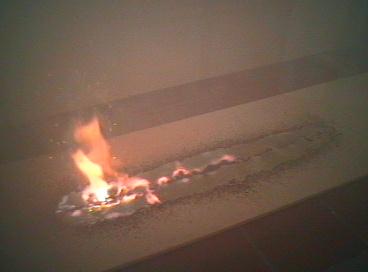| Photo 1: | Gunpowder is composed of 75 % potassium nitrate, 15% charcoal and 10% sulfur. |
| Photo 2: | Gunpowder is laid down in a strip 40 cm long. It is ignited using a magnesium brand. |
| Photo 3: | The entire length of gunpowder burns within 5 seconds with a very bright flame. Large quantities of gas and smoke are emitted.
In the experiment illustrated above, the reactants were coarsely, rather than finely, ground. This was done on purpose to cause the
the gunpowder to burn rather than explode (whether it burns or explodes depends on the particle size). |
| Photo 4: | The reaction products produced by the burning are nitrogen, carbon dioxide, sulfur dioxide and potassium carbonate. 1 kg gunpowder produces approx. 350 liter gas and smoke. |
The monk Berthold Schwarz discovered gunpowder in the 14th century. It had been known in China since the
the 12th century. Until the middle of the 19th century, gunpowder was the most important substance used in artillery and explosives. Today it is limited to the production of fireworks.







